Exploring Islamic Home Architecture and How It Provides Privacy for Muslim Women
by Haneen Arshad in Culture & Lifestyle on 25th September, 2025
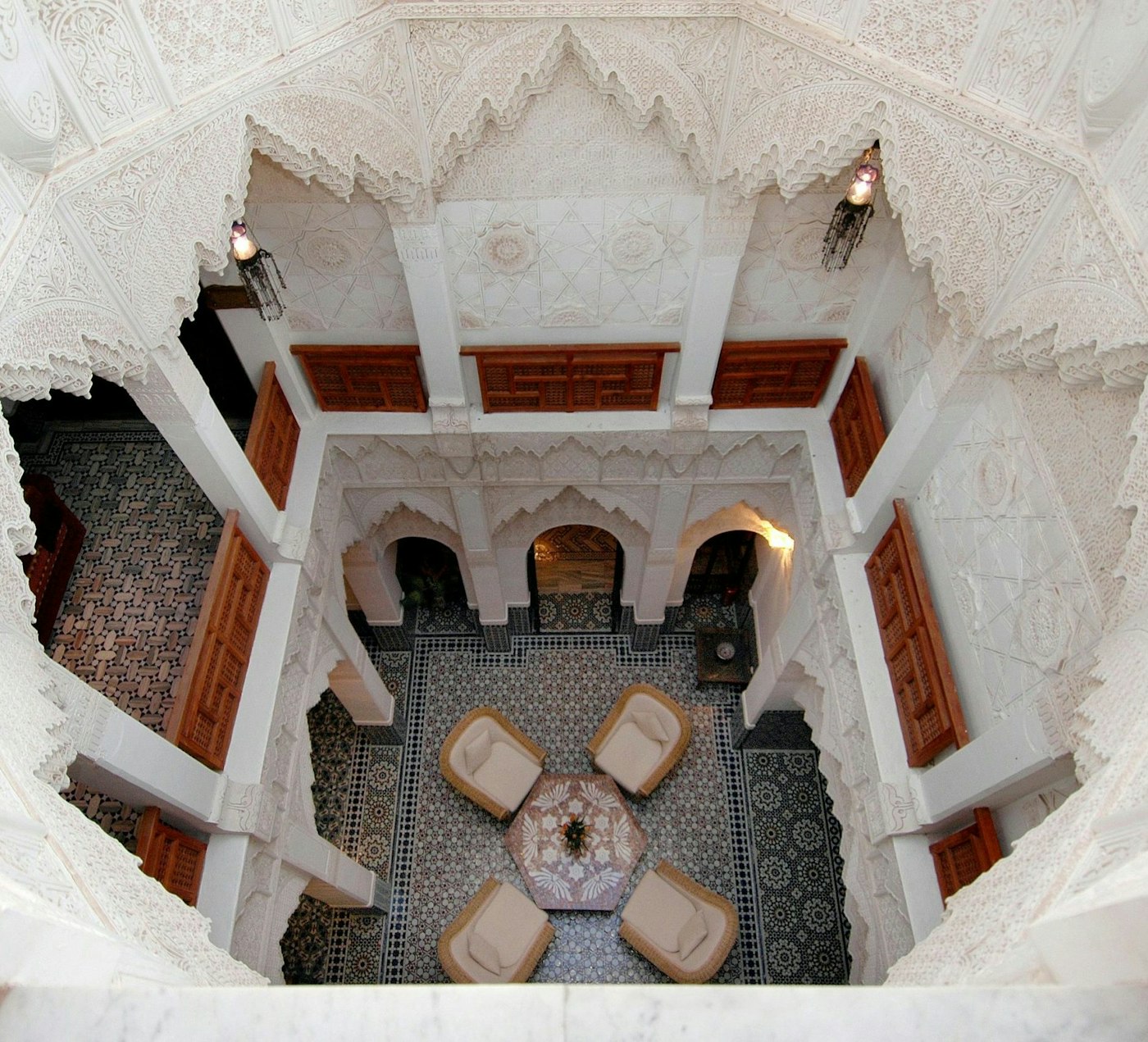
The history of the traditional Arabic house spans several centuries and reflects the interplay of environment, culture and belief. The earliest examples, dating back to Syria and Mesopotamia (modern-day Iraq) around 3300 BC, introduced the basic form of the courtyard house. These early dwellings were inward-facing, with rooms arranged around a central open space often planted with greenery. They were practical responses to climate and materials: long, narrow rooms, thick walls and limited windows created stability and privacy. Domes and arches also emerged in this period as alternatives to scarce timber.
Subsequent cultural shifts shaped the courtyard further. Under Persian, Seleucid, Roman and Byzantine influence, houses developed more elaborate spatial arrangements and aesthetic refinements.
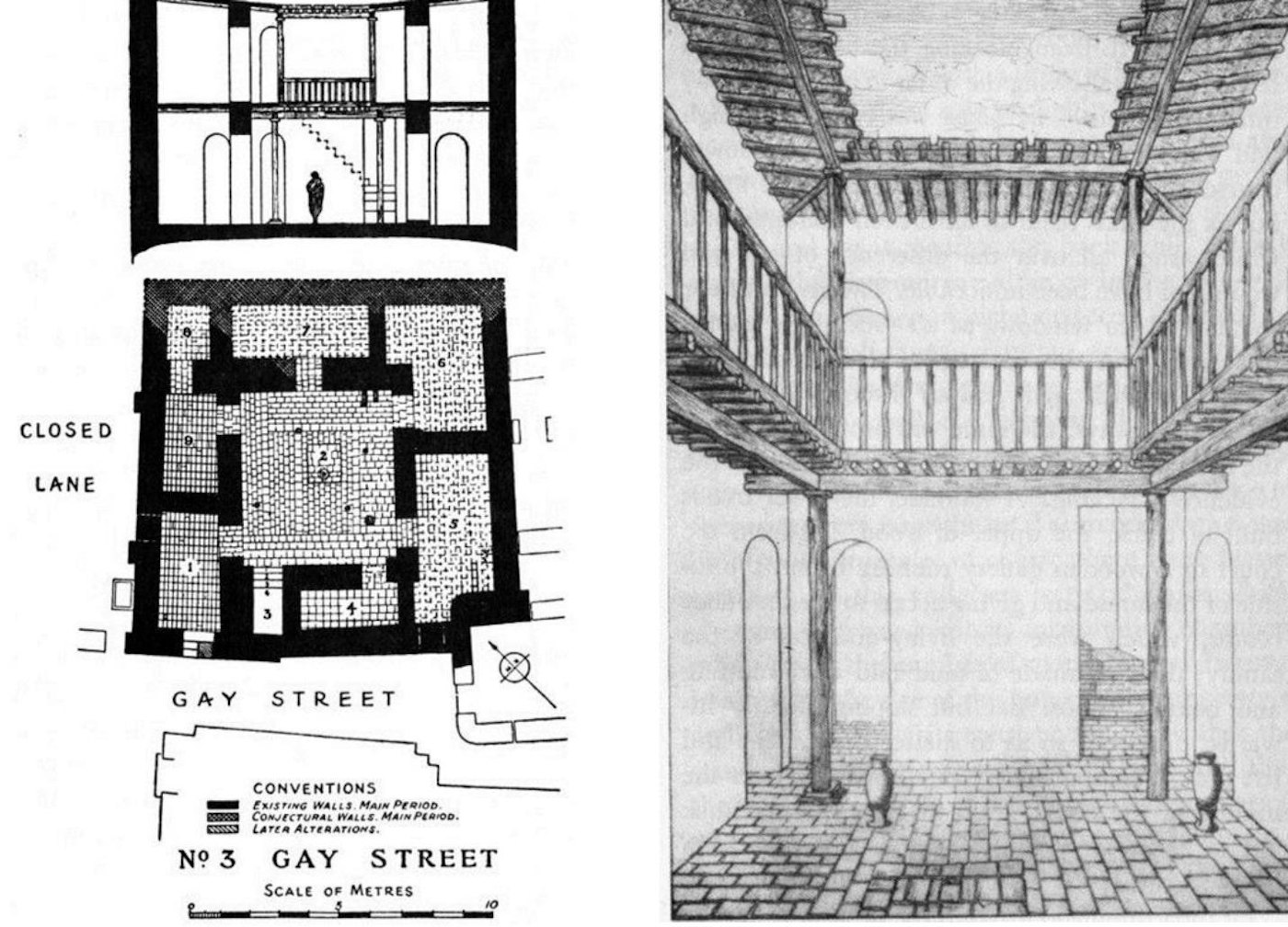
Drawing of an ancient Roman home
By the first centuries AD, Syrian architecture had influenced Roman design, and houses were divided into distinct zones: the atrium for guests and the open space courtyard for family quarters. In rural Syria, variations such as side courtyards and dual entrances appeared; features that would later inspire the semi-open iwan (vaulted hall) of Islamic houses.
With the expansion of Islam in the 7th century, the courtyard home took on new symbolic and functional significance. The Prophet Muhammad’s ﷺ house in Madinah, regarded as the first Islamic architectural monument, embodied simplicity and purpose: private quarters, a prayer and meeting area and space for visitors. These became the hallmarks of Islamic principles in design, guided by the Shariah, which is rooted in the Qur’an and the teachings of the Prophet ﷺ.
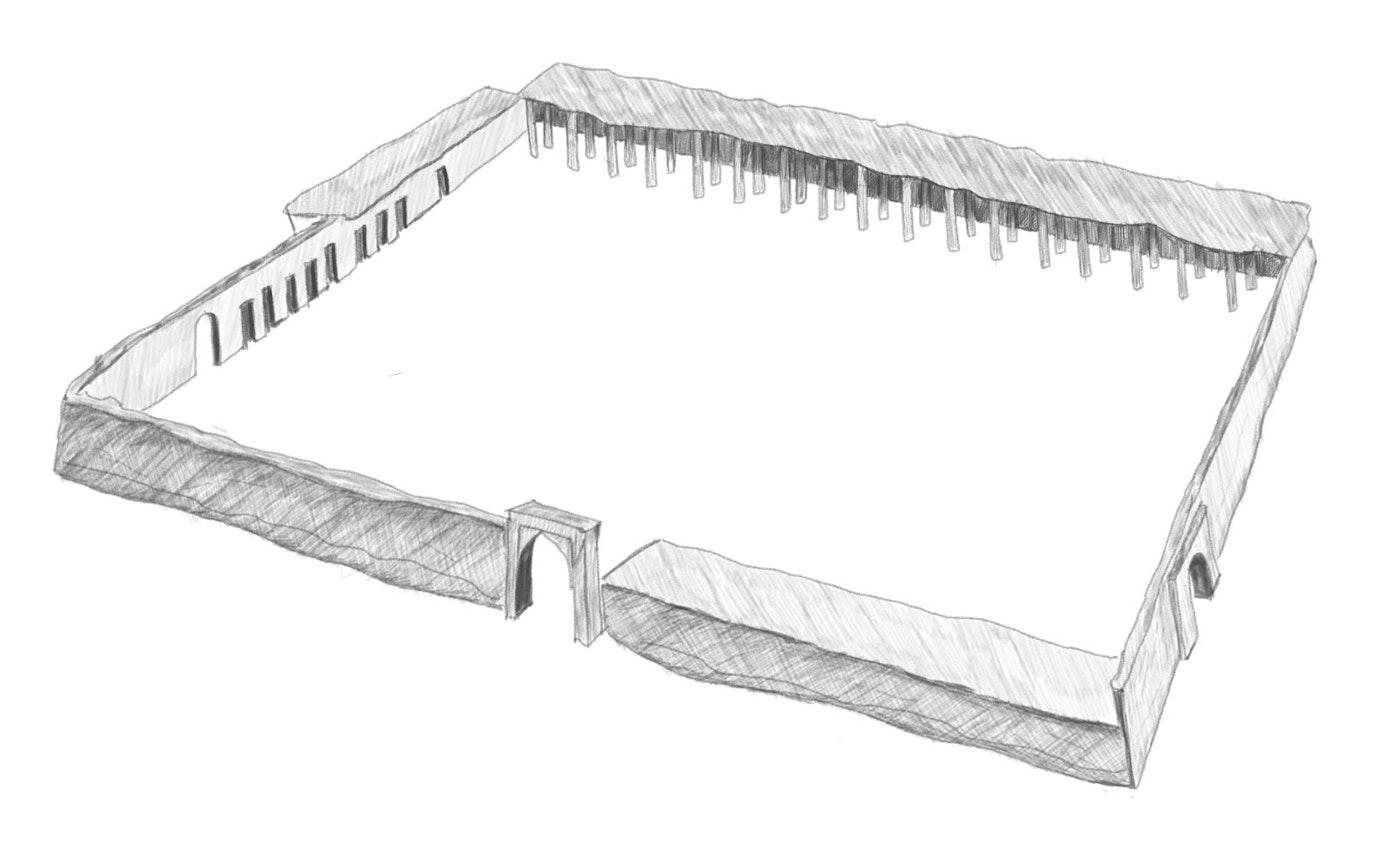
Drawing of the Prophet’s ﷺ home in Madinah
Three core principles would shape these spaces:
- Privacy – Homes are designed to protect the family sanctuary, allowing freedom of movement and comfort without exposure to outsiders.
- Modesty – Spaces support religious rituals and daily life with humility in design, emphasising sustainable, economical and human-centred layouts.
- Hospitality – Dwellings provide opportunities to welcome guests and strengthen social bonds, creating connections beyond the family.
As the Caliphate moved to Damascus, Islamic rulers sought to create an architectural language that could compete with Christian monuments while reflecting Islamic values. Local craftsmen and materials were employed, fusing regional traditions with new religious principles. By 750 AD, a distinctly Islamic architecture had emerged, one that redefined the interior organisation of the house to align with cultural ideals and environmental adaptation.
This Islamic period marked the synthesis of two themes: shelter and habitat. The home was not only a protection against the climate but also a sacred space where family, faith and community life unfolded.
The Arabic term maskan, derived from sakina (peace, tranquillity), captured this dual role and courtyards became the heart of family life.
Regional Expressions of the Islamic House
Although unified by shared principles, Islamic domestic architecture took on diverse forms across regions, each adapting to local culture, materials and climate while preserving the core value of privacy for women and family life.
In Syria, the courtyard house became highly refined, with a strong division between the salamlek (male guest areas) and the haramlek (women’s and family quarters). High walls, inward-facing windows, and wooden latticework ensured seclusion while allowing light and air to circulate.
Courtyards, often filled with greenery and fountains, created a cool microclimate and provided the women of the household with space for social and domestic activities out of public sight.
The Syrian model, particularly in urban centres like Damascus and Aleppo, deeply influenced later Islamic housing across the Mediterranean and Middle East.
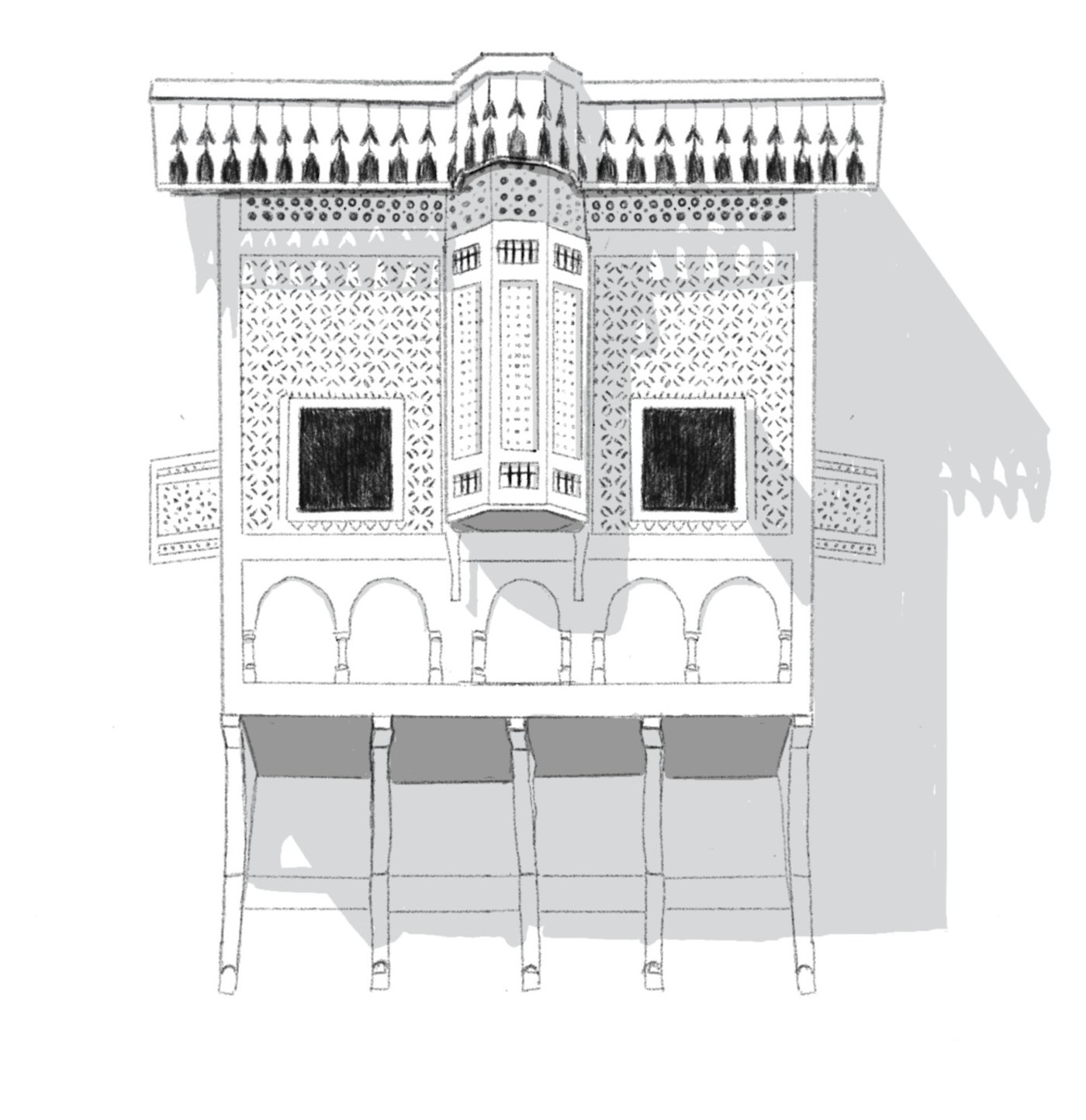
Drawing of a Mashrabiya (latticework) window
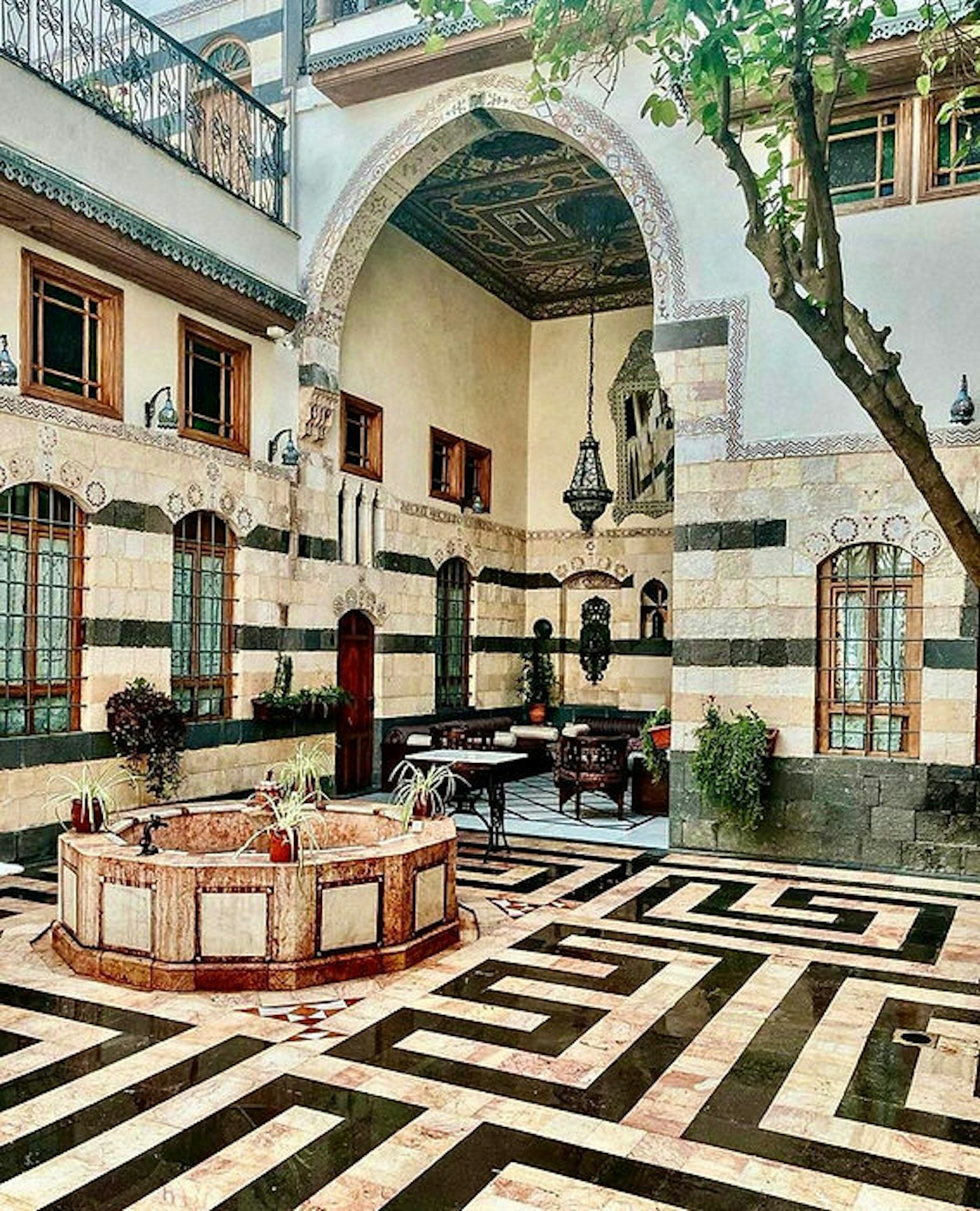
Traditional Syrian home courtyard
In Turkey, the traditional Ottoman house, known as the hayat or sofa house, combined nomadic openness with Islamic seclusion. The central sofa or hall connected the rooms, but over time, layouts were adapted to reflect values of gendered privacy. Homes were divided into haremlik (women’s quarters) and selamlik (male reception areas), while lattice screens, enclosed gardens and concealed windows ensured that women could move freely within their domain. Regional variations were striking: stone courtyard houses in Diyarbakır, tiered dwellings on Mardin’s hills and ornate mansions in Urfa, each adapting the Islamic model to geography and culture.
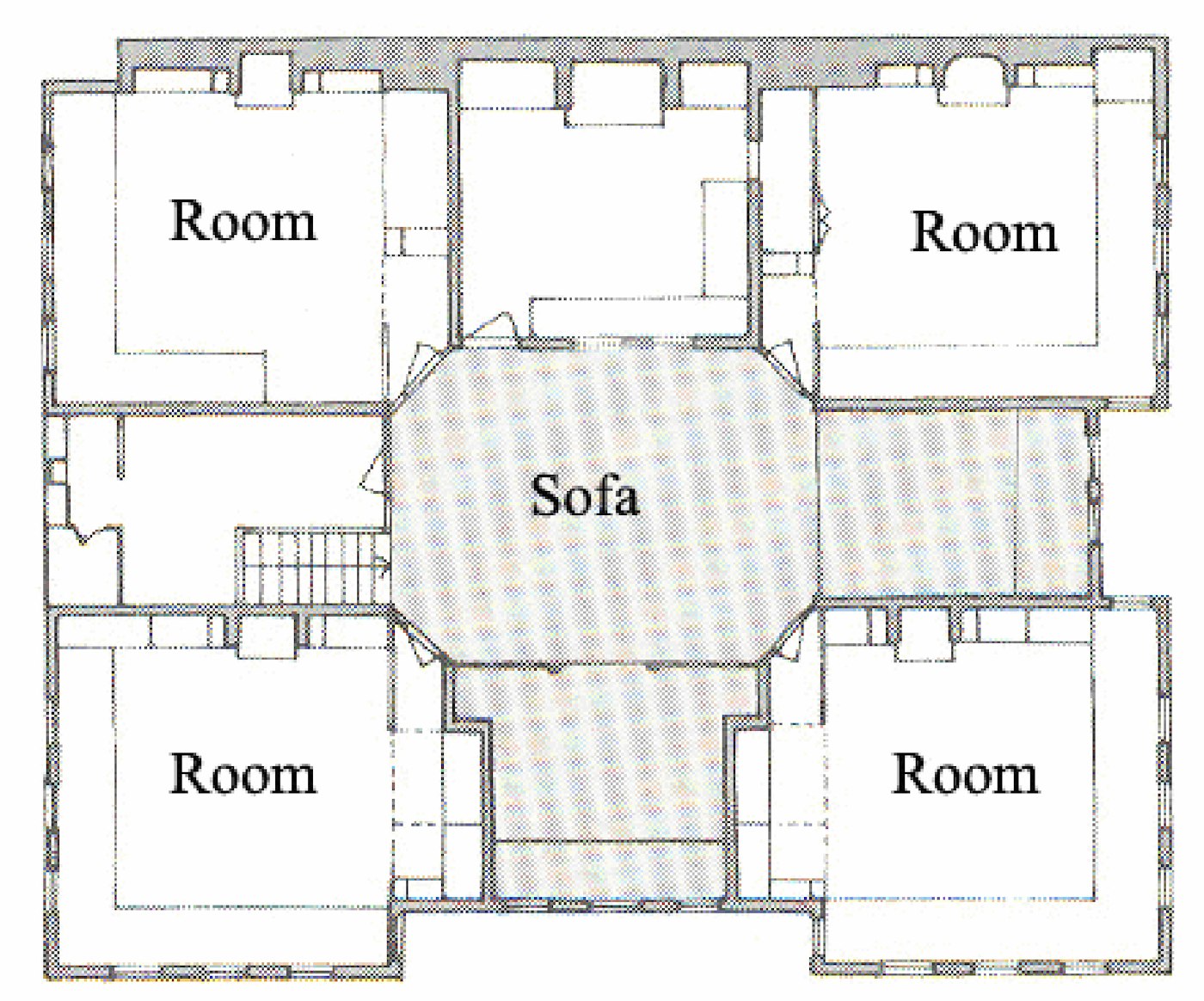
Traditional Turkish home courtyard layout
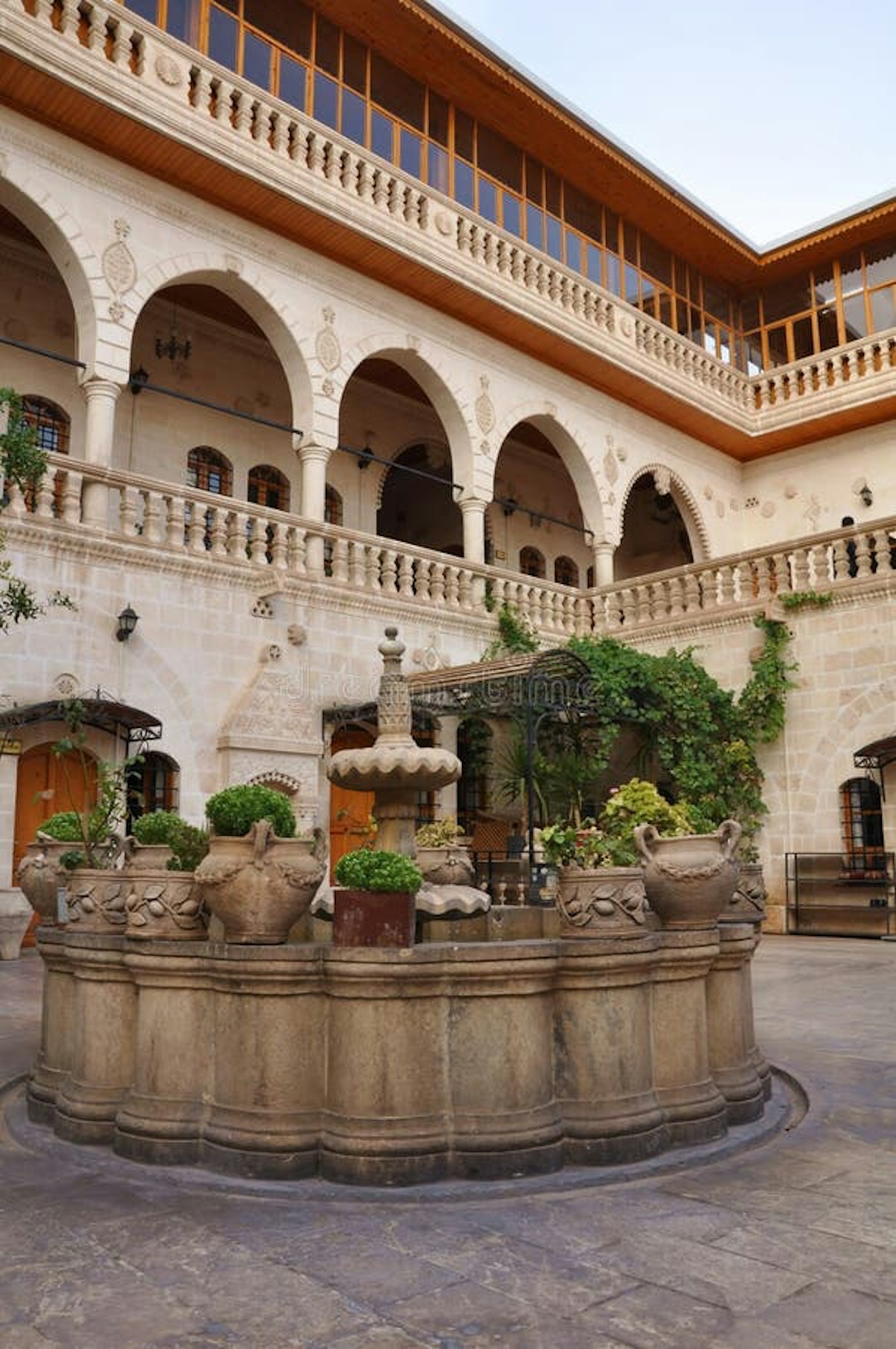
Traditional Turkish home with courtyard
In Mali, particularly in cities like Timbuktu and Djenné, Islamic domestic ideals merged with Sudano-Sahelian traditions. Homes were built from thick adobe walls that kept interiors cool, with modest street façades and no outward windows. Inside, however, central courtyards provided light, ventilation and space for women to manage family life while remaining unseen by passersby. Roof terraces added extra layers of privacy, offering relief during hot nights. Here, too, women’s autonomy within the home was supported by the introverted design, even in a dramatically different African climate.
In India, Islamic domestic ideals took form in the havelis, particularly under Mughal influence. These multi-storied courtyard houses were elaborately decorated but preserved the same core divisions: mardana (men’s areas) and zenana (women’s quarters). Women observed courtyard life from behind jharokhas (carved balconies) and jali (stone lattice screens), ensuring their privacy while allowing ventilation and filtered light. The haveli thus fused Persian-Islamic principles with Indian craftsmanship, producing homes that were both protective and artistically rich.
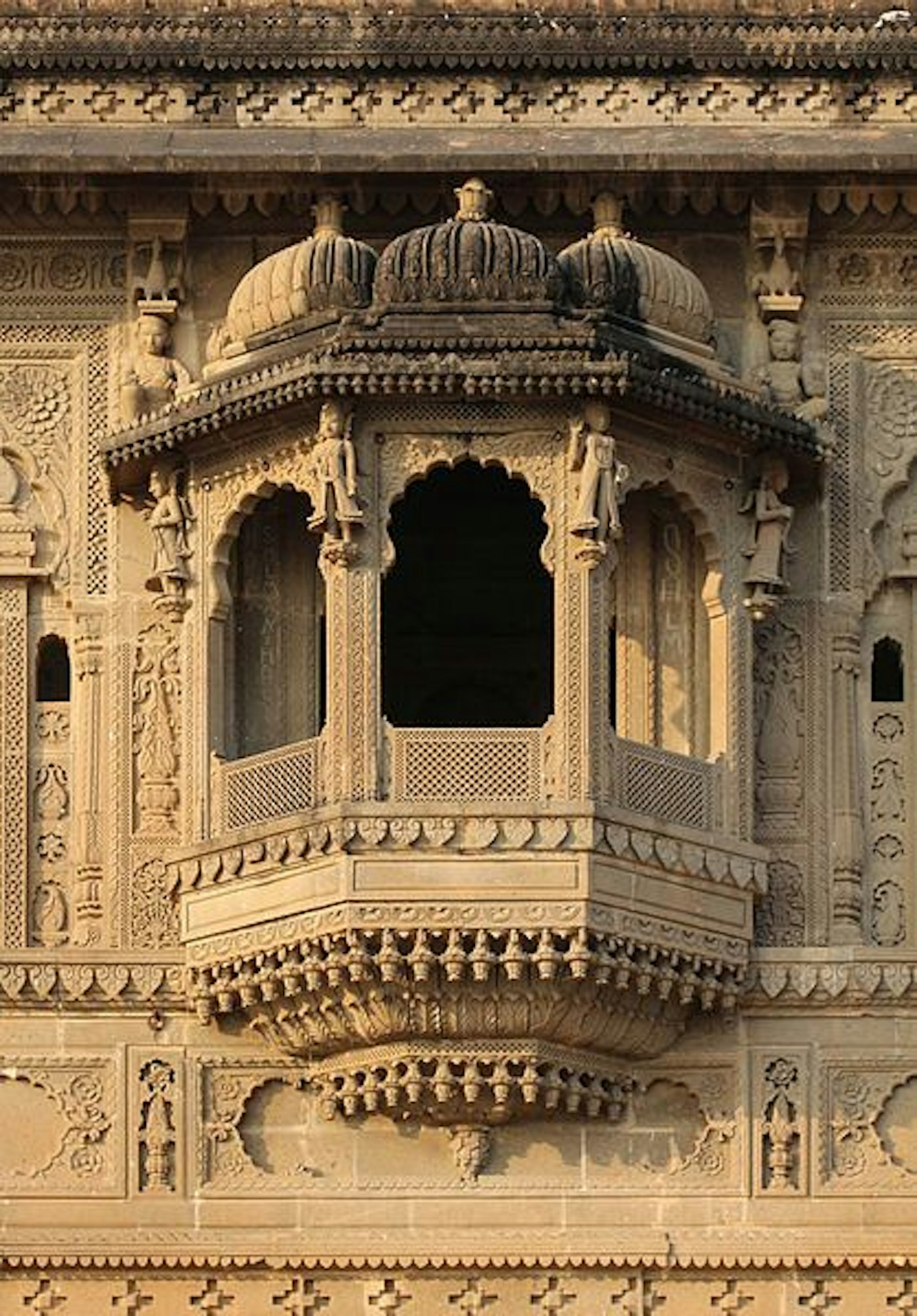
Haveli Jharokhas
In Morocco, the riad (a traditional house) embodied the values of seclusion and climate adaptation. Hidden within the Medina walls, riads turned entirely inward, with windows facing courtyards rather than streets. At their heart lay open-air gardens, adorned with zellij mosaics, fountains, and fruit trees. Privacy was paramount: families lived undisturbed by the bustle outside, while women enjoyed freedom within beautifully enclosed sanctuaries. Functionally, riads also cooled the air naturally; high walls blocked sunlight and open ceilings released hot air, making them sustainable long before modern cooling systems.
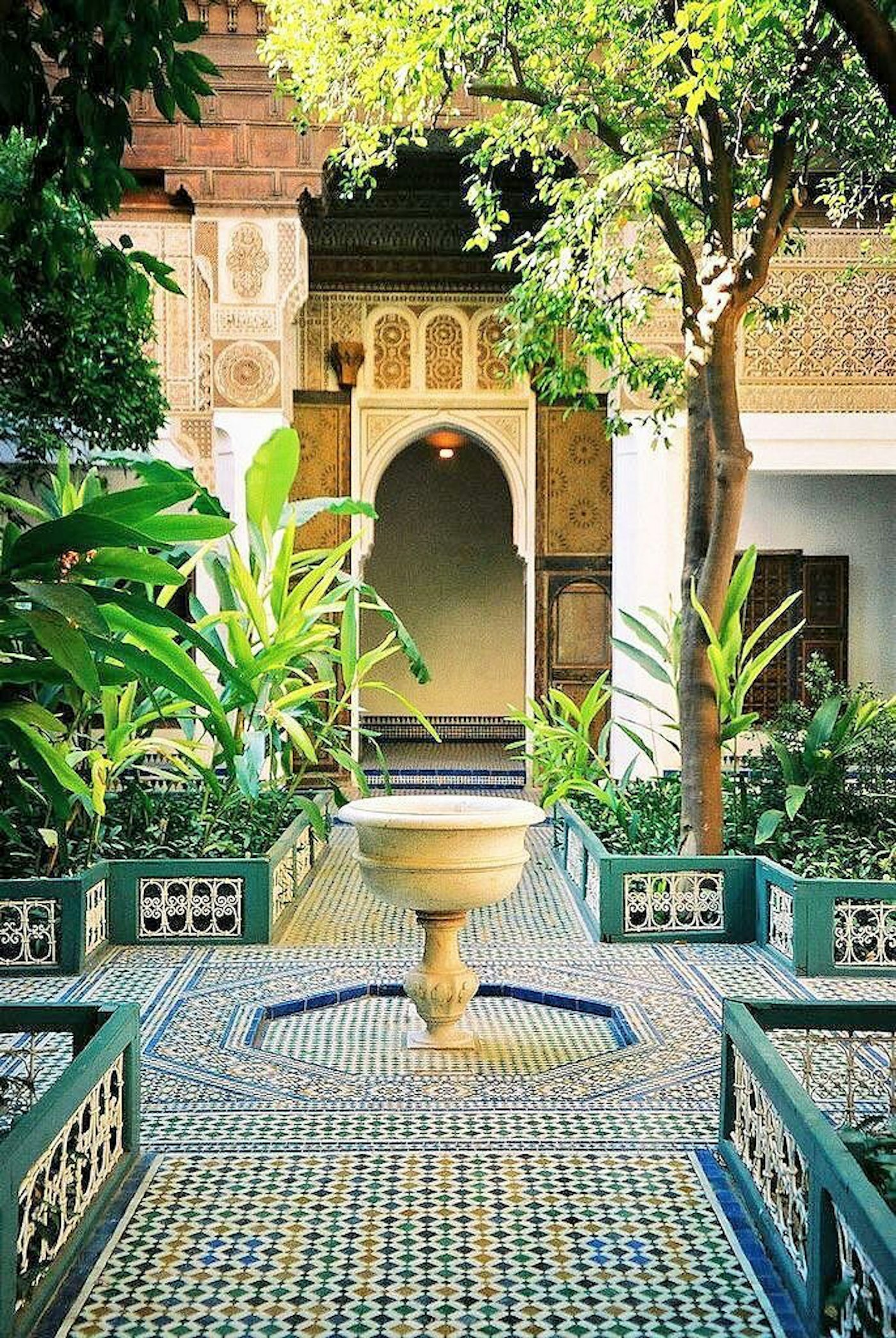
Traditional Moroccan home courtyard
Traditional Islamic House: Privacy & Innovation
Despite their regional diversity, these houses all revealed a consistent theme: the Islamic home as an inward sanctuary, where privacy, modesty, and climate-consciousness defined space and function.
At the heart of Islamic homes are values of privacy and family, a concept deeply rooted in religious teachings and cultural expectations. When entering such a home, a guest typically walks through a narrow, modest corridor that opens into an open-air courtyard with fountains and or green trees/plants. This design ensures that no direct visual access is allowed from the entrance to the private areas of the house, thereby maintaining privacy, especially for the women of the home.
Additionally, courtyards, iwans, high walls, and lattice screens were not only cultural features but also environmental technologies. They created shade, promoted air circulation, and allowed hot air to escape while cooler air circulated through shaded courtyards. Thick mud-brick or stone walls acted as insulation, keeping interiors cool during the day and warm at night.
In Morocco, for example, a riad’s central patio could lower the temperature by as much as 10°C compared to the street outside. This natural system of passive cooling was sustainable, efficient and integrated into daily life.
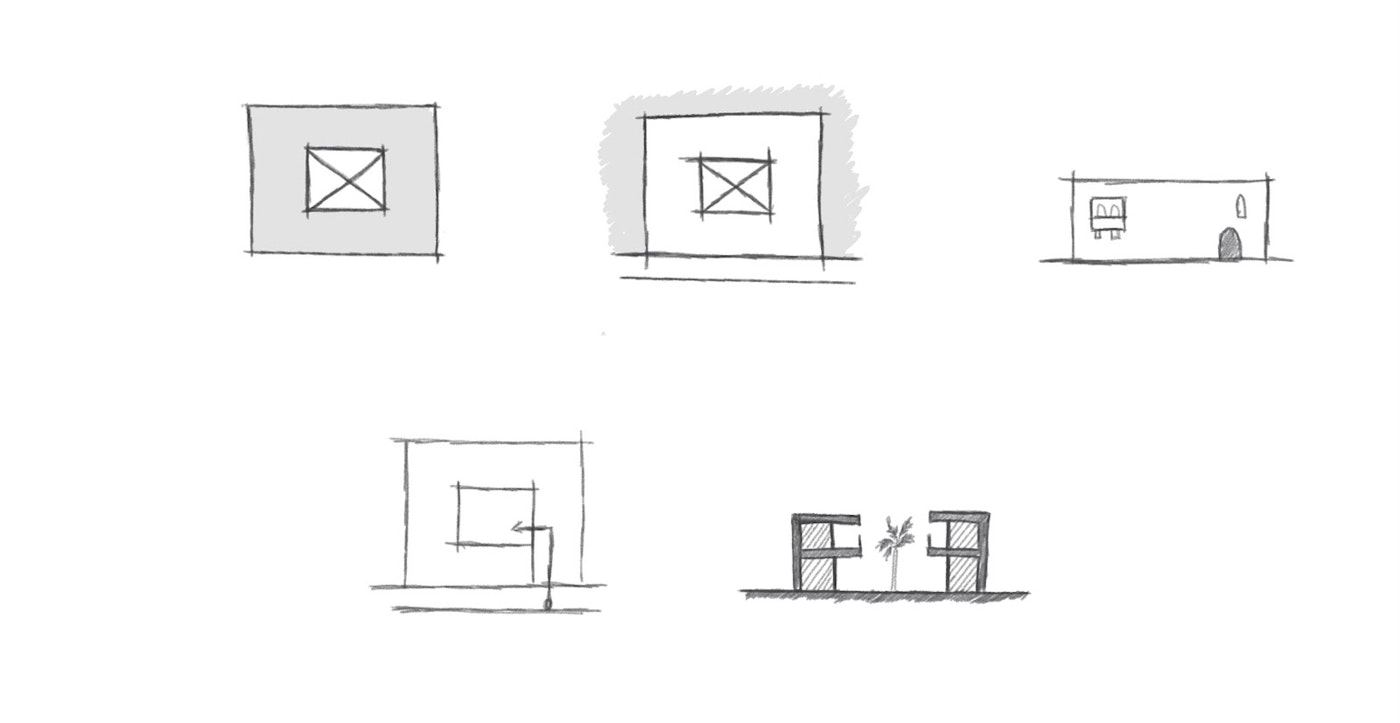
Diagram of homes with a courtyard
Western Homes: Sustainability and Privacy for Women
By contrast, the rise of the Western suburban home in the industrial age marked a profound departure. Instead of relying on thick walls, shaded courtyards and cross-ventilation, homes came to depend on mechanical systems of heating and cooling. This technological turn aligned with Western ideals of transparency, visibility and openness to the public realm. Large windows, open plans and exposed gardens embodied individualism and social display but often at the cost of privacy.
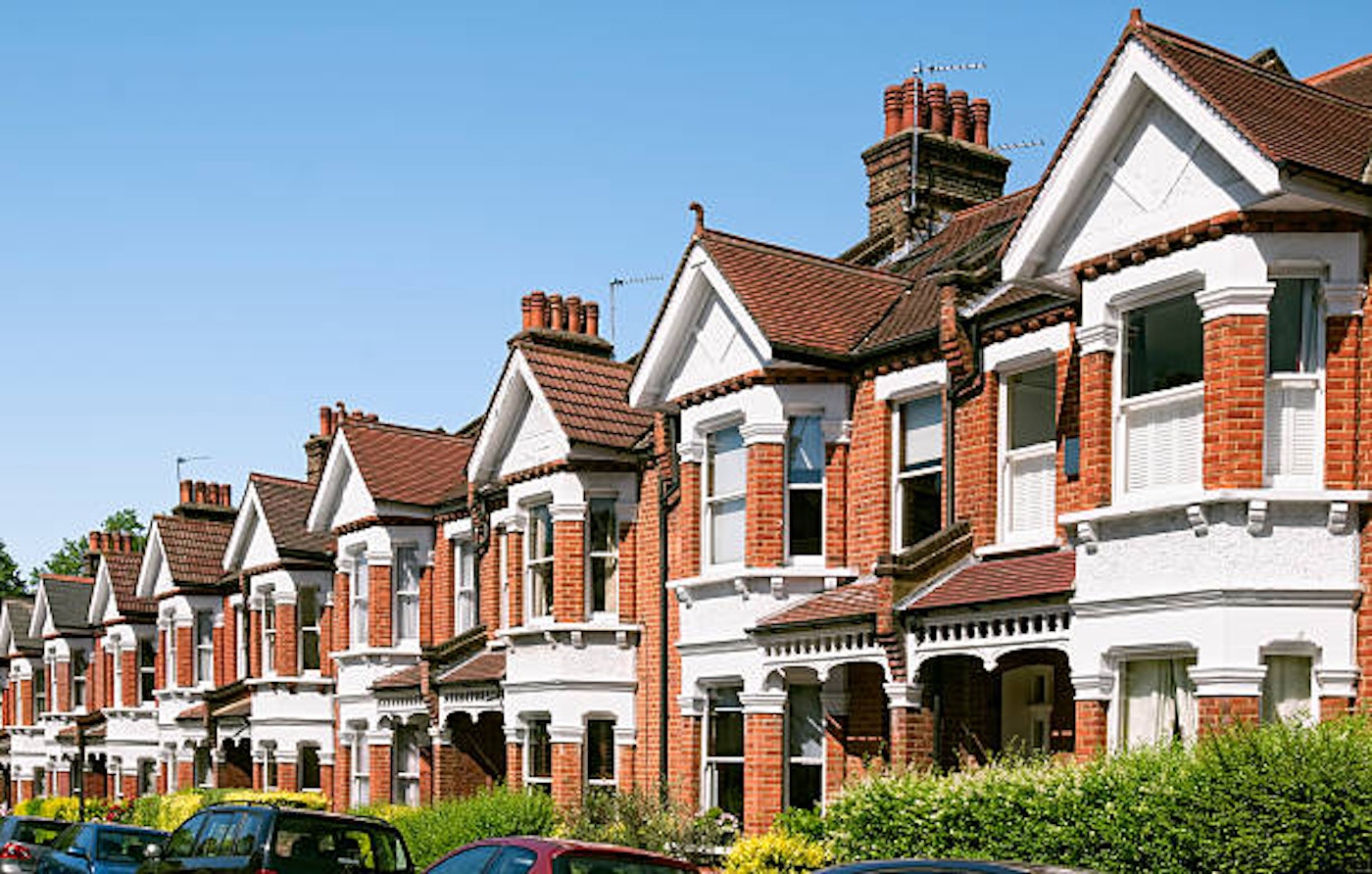
Western suburban homes
For women, this shift also had cultural implications. Islamic homes with their climate-responsive courtyards provided a private space to relax. In Western homes, however, backyards and patios, though sometimes breezy and comfortable, were often fully exposed to neighbours, limiting their use by women seeking modesty.
What Islamic homes achieved through introversion and careful zoning, Western homes often neglected, leaving outdoor spaces and even domestic routines exposed to the gaze of others. Thus, the reliance on mechanical cooling not only altered the relationship between architecture and climate but also shifted the balance between privacy and visibility.
This divergence is not only cultural but ecological. Traditional Islamic homes exemplified passive sustainability centuries before the term was coined. They naturally cooled and insulated, creating microclimates within walls that offered comfort without energy expenditure. However, in the modern world, comfort has become a product of consumption, air conditioning, central heating and insulation materials – contributing to escalating energy demand.
Ironically, as the planet warms, many architects are now looking back to the courtyard, the mashrabiya, and the shaded arcade as models of climate-resilient design. Elements such as courtyards, green walls, and cross-ventilation are being reintroduced into modern designs, bridging the gap between Islamic principles of seclusion and sustainability and Western aspirations for comfort and openness. However, in contemporary practice, such features are often marketed as luxury, accessible only to those with financial means, rather than as a universal right of habitation.
The story of the traditional Islamic house is not just an architectural history, but a testament to how deeply homes reflect the values, beliefs and environments of the societies that build them. From the mud-brick courtyards of Mesopotamia to the mosaic-lined riads of Morocco, these houses were more than shelters; they were carefully crafted sanctuaries. At their core lay an ethic of inwardness, where the family could live their lives away from external intrusion.
Over centuries, as Islamic civilisation expanded, these principles took root across diverse landscapes—Syria, Turkey, Mali, India and Morocco—each adapting the courtyard model to local materials, craftsmanship and cultural traditions. This consistency illustrates that the Islamic house was not a static design but a living system, flexible enough to evolve across regions, yet firm in upholding the values of modesty and familial cohesion.
In the end, the courtyard house exemplifies that a home can be both a shield from the world and a bridge to community. Unfortunately, modern architecture is not able to recover this balance between openness and seclusion, technology and nature, individuality and community, so that all people, regardless of faith or background, may feel both sheltered and seen.
Haneen Arshad
I am an architectural conservationist and artist based in the UK, originally from Canada, with a deep passion for the preservation and appreciation of historic buildings. My professional work focuses on safeguarding architectural heritage, while my artistic practice allows me to reinterpret and celebrate these spaces through highly detailed drawings. By documenting and reimagining historic structures, I not only raise awareness of their cultural and historical importance but also explore the ways architecture connects us to identity, memory and place. This journey has brought me closer to my own culture, faith, and community, inspiring me to use my art as a means of storytelling, education, and advocacy. Whether through conservation or creative practice, my commitment lies in keeping the legacy of architectural heritage alive for future generations.